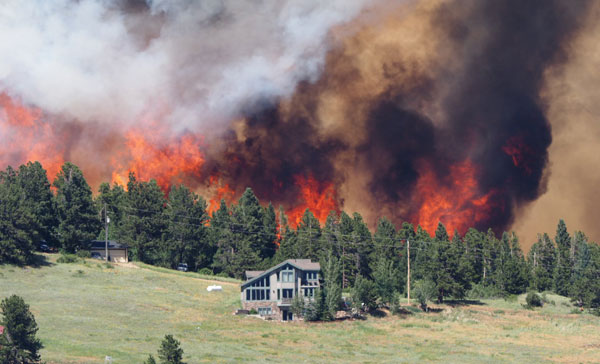
Members of the Air Force Reserve’s 302nd Airlift Wing, Wyoming Air National Guard’s 153rd Airlift Wing, and other firefighting agencies began a week of aerial wildland firefighting training on Monday. The training is conducted by the USDA Forest Service at Jeffco Airtanker Base.
“The Modular Airborne Fire Fighting System (MAFFS) program provides an important supplement to our national air tanker capacity,” said Kim Christensen, deputy assistant director for operations for the USDA Forest Service. “This week is our opportunity to train with our military partners and recertify these important aerial firefighting resources.”
The C-130s equipped with MAFFS are essentially converted into air tankers and provide a critical “surge” capability that can be used to augment wildfire suppression efforts. MAFFS are only activated when all commercial air tankers that are part of the national air tanker fleet are fully committed or not readily available.
The aircraft will be doing practice water drops in the nearby Arapaho and Roosevelt, Medicine Bow, and Pike and San Isabel National Forests using potable water. Residents and visitors in those areas may see low-flying C-130 aircraft and USDA Forest Service lead planes throughout the week. MAFFS aircraft will start and end their days at their home units while loading water from Jeffco Airtanker Base as part of the training.
“The MAFFS mission represents interagency cooperation at its best and most effective,” said Brig. Gen. William Betts, vice commander, Air Forces Northern Command. “When our civilian, interagency partners need us, we’re ready to answer the call with support from the Air National Guard and Air Force Reserve. This training package helps us ensure we’re ready, throughout the entire season, to provide the support they need within 48 to 72 hours.”
The 302nd Airlift Wing and 153rd Airlift Wing C-130 Hercules aircraft are equipped with the USDA Forest Service’s MAFFS, which can drop up to 3,000 gallons of fire retardant in less than 10 seconds across a quarter-mile line. The system slides into the back of the military aircraft, and a retardant is released through a nozzle on the rear left side. MAFFS aircraft can be activated to supplement the USDA Forest Service and the civilian air tanker program to slow or stop the spread of wildland fires across the nation.
The three Air National Guard wings tasked with conducting MAFFS missions include the 146th Airlift Wing from Channel Islands, Calif., 152nd Airlift Wing from Reno, Nev., and the 153rd Airlift Wing from Cheyenne, Wyo. The 302nd Airlift Wing, Peterson Air Force Base, Colo., is the only Air Force Reserve unit carrying out the Modular Airborne Fire Fighting System mission.
The certification training, sponsored by the USDA Forest Service, includes classroom sessions, flying and ground operations for Air Force aircrews, civilian lead plane pilots, and support personnel from the USDA Forest Service, Bureau of Land Management, and other state and federal firefighting agencies. For further information regarding the MAFFS program, visit www.dvidshub.net/feature/MAFFSAEG.
Support Northern Colorado Journalism
Show your support for North Forty News by helping us produce more content. It's a kind and simple gesture that will help us continue to bring more content to you.
BONUS - Donors get a link in their receipt to sign up for our once-per-week instant text messaging alert. Get your e-copy of North Forty News the moment it is released!
Click to Donate
